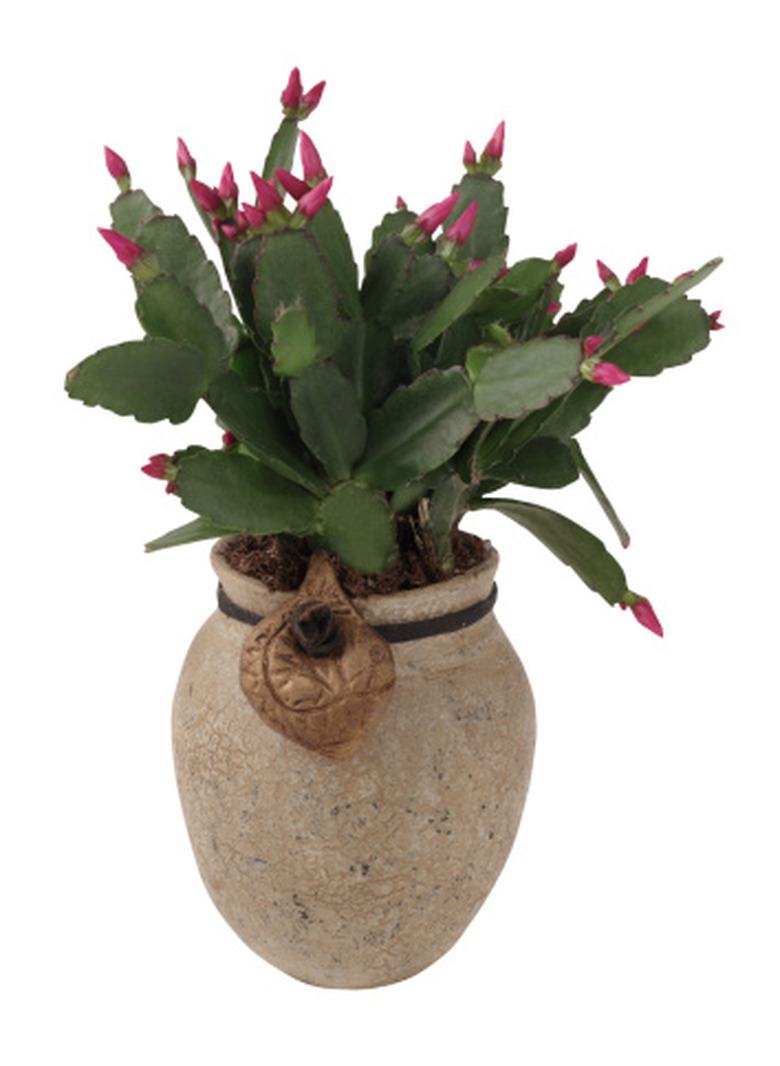How To Grow A Christmas Cactus From A Broken Piece
Things Needed
- Perlite
- Flower pot
Tip
Multiple joints on one section produce stems that branch to the side. Limit the number of sections for rooting to about five sections when including multiple-joint sections.
The Christmas cactus (Schumbergera bridgesii) is a member of the holiday cactus family. The bloom time of the plant is dependent on short periods of daylight and cool temperatures customary in late fall. The combination of cool temperatures and reduced sunlight causes the cactus to bloom in December. In October or November, encourage the cactus to set buds for a December bloom by setting the plant near a sunlit window in a room with temperatures between 60 and 65 degrees Fahrenheit. Christmas cactus is easy to propagate from a broken piece of a stem.
Step 1
Break or cut the stem to include two to three sections connected end to end. Each section has one flat end and one pointed end that connects to the previous section of the stem. Collect the stem sections about six months after the plant blooms, which could be May or June. During that six-month time frame, the plant will replenish nutrients depleted during the bloom cycle. A stem piece accidentally broken from the Christmas cactus can be rooted anytime, but it may not bloom the first year.
- The Christmas cactus (Schumbergera bridgesii) is a member of the holiday cactus family.
- In October or November, encourage the cactus to set buds for a December bloom by setting the plant near a sunlit window in a room with temperatures between 60 and 65 degrees Fahrenheit.
Step 2
Keep the sections connected. Each section should be whole. If the break occurred through a section, disconnect the torn section at a joint. The section can be disconnected at a joint by grasping a section in each hand with your thumbs close to the joint. Gently pinch and pull the sections apart. Place the sections on a saucer to dry overnight.
Step 3
Place perlite in a container at least 2 inches deep. Moisten the perlite.
- Keep the sections connected.
- The section can be disconnected at a joint by grasping a section in each hand with your thumbs close to the joint.
Step 4
Examine the joint of the Christmas cactus section. The end should be dry and firm. If the joint is not dry, allow the sections to rest for a few more hours. If the joint is dry, insert the end into the moist perlite to a depth of about 1 inch. Multiple cuttings can be rooted in the same container. Space the cuttings about 1 inch apart.
Step 5
Cover the container with a plastic bag to hold in moisture. Secure the bag around the container. A small container may be placed inside a food storage bag that can be sealed from the top.
- Examine the joint of the Christmas cactus section.
- Cover the container with a plastic bag to hold in moisture.
Step 6
Place the container in indirect sunlight. Keep the perlite moist. Minimal moisture inside the bag is expected. If moisture is dense, covering one-third of the bag, then open the bag to allow the excess moisture to escape.
Step 7
Examine the roots of one of the cuttings after six weeks in the perlite. If the roots are at least 1 inch long, the cutting is ready for transplanting into potting soil. Return the cutting to the perlite if roots are too short. Reseal the bag and check the roots again in about two weeks.
- Place the container in indirect sunlight.
- Return the cutting to the perlite if roots are too short.
